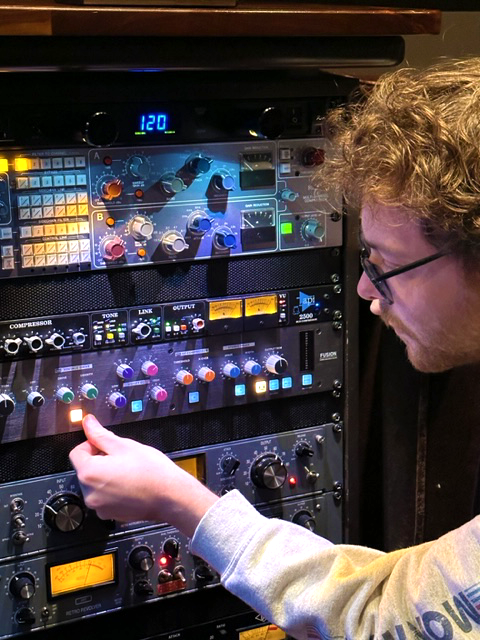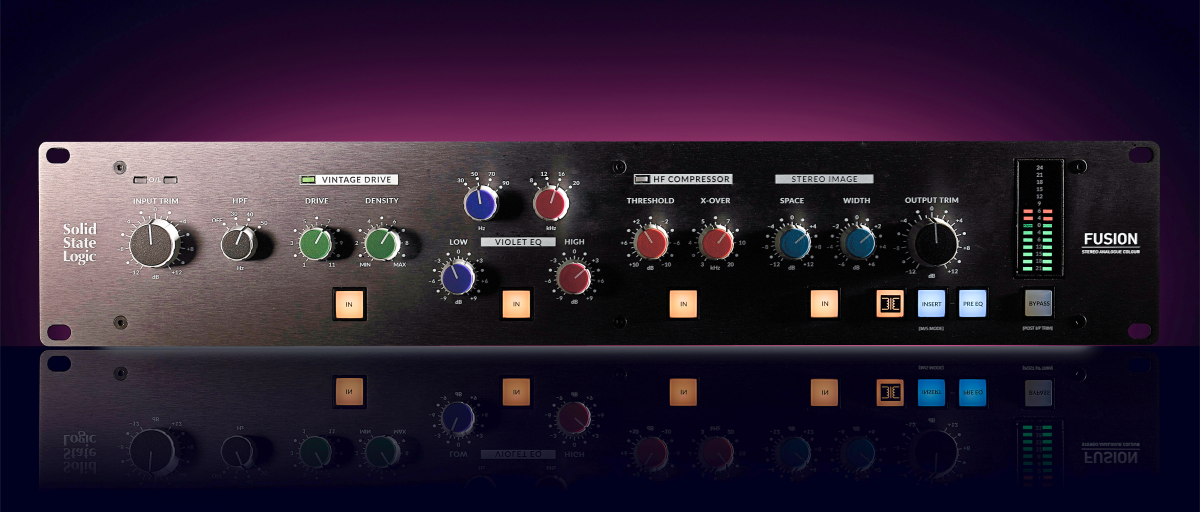SSL Fusion: a versatile, creative solution
“Saturation was key for some of the drum and percussion layers where we needed a little extra energy and we had to be honest to the original. We used it on instrument subgroups; specifically, for percussion — cymbals, shakers, tambourines, hand drums, snaps — that we wanted to make pop out of the mix without adding extra volume or extra EQ. We literally turned up both saturation knobs — Drive and Density — all the way to the max, and that was the sound. With Density we were able to change the weight of the sound.”
He continues, “On the Fusion, I would also get into the habit of multing a vocal, throwing it into the Drive and cranking it to get something really gnarly. In general, if I am doing vocals, electric guitars and basses, they all sound phenomenal through that Vintage Drive section. Often, I will take an electric guitar subgroup and throw it to the Drive and blend it back in. Or I might take a bass while I’m tracking, if it’s more aggressive material, multi it, then send it to the Vintage Drive and bring it back in.”
Germano Studios opened in 2008 with twin 48-input Duality desks. “The SSL EQs have always been great because they are so flexible, Yanchyshyn says. “There are tons of other designs on the market these days, but the SSL designs have always been the most flexible, in my opinion, and they are extremely musical. So even if you use the UltraViolet EQ in a tracking situation, if you are being gentle with it, I feel like you can’t go wrong. Both our rooms have a UltraViolet EQ, which is important, because if we have a client that likes either the top or the bottom bands, or the HP filter, it’s good to have both these units.”
In short, Yanchyshyn says, both the Fusion and UltraViolet EQ have become mainstays at Germano Studios. “I really enjoy using both of them,” he says.


